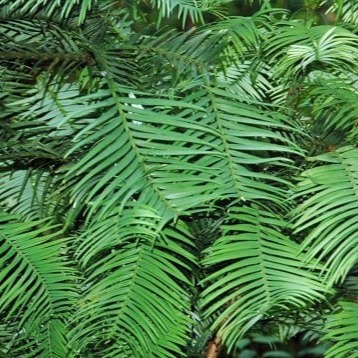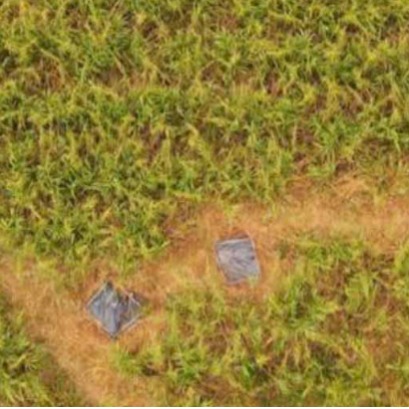
This strange tree only exists in three locations in the world: it was discovered by a forest guard by chance
We are going to move in the mid -1990s, at which time a strange tree was global news. Everything occurred when a forest guard toured a mountainous area inside an Australian National Park. The density of the vegetation and the isolation of the place made someone pass over there before with scientific intention
Neither its cortex, nor its leaves, nor their way of growing coincided with the registered species. The guard, with great innocence, brought samples to analysis without knowing that he had found a species that seemed to have survived the passage of time with hardly any changes. What is the strange tree that was discovered by chance in the 90s? The species that we are going to decipher on this occasion is Wollemia Nobilis, the only member of the genus Wollemia. His finding occurred in the Wollemi National Park, in Nueva Wales del Sur, about 150 kilometers northwest of Sydney. It belongs to the Aracariaceae family, to which the genres Agathis and Araucaria also belong. The Morphology of the Tree presents uncommon elements. It can reach between 25 and 40 meters high, with a dark brown bark, a knotty appearance, which is easily identifiable. If the trunk is damaged or short, new stems arise from the base, which gives rise to structures with multiple trunks that are actually part of the same organism. The lateral branches have an atypical behavior. After a limited time of growth, they end their development in a cone, whether male or female. Once the mature cone, the branch stops growing and dies. New branches are born directly from the main trunk, from inactive outbreaks. The leaves are flat, linear, between 3 and 8 centimeters long, distributed in spiral but visually oriented in flat rows. The female cones reach 12 centimeters long and take about 20 months to complete their maturation, while the male measure up to 11 centimeters and have a conical shape. How is it called and in which part of the world is this strange tree? To preserve the environment and avoid the spread of diseases, the exact location of these enclaves was not published by the environmental authorities. One of the main risks to the species is their low genetic diversity. The tests carried out to date indicate that all known specimens are genetically identical. It is estimated that the population went through an evolutionary bottleneck, in which it was reduced to one or two individuals, losing almost all its genetic variability. In addition to the genetic threat, in 2005 an infection caused by the Phytophthora cinnamomi fungus in specimens was detected in specimens in specimens Silvestres This pathogen can be lethal to the tree and it is believed that it was introduced by unauthorized visitors. Despite these risks, the tree is remarkably resistant to extreme climate. It can tolerate temperatures up to 45 ° C in summer and support minimum -12 ° C in winter. It grows well in both shadow and in the middle of the Sun.Exems of the Wollemia Nobilis in Spain with the objective of ensuring its preservation, a propagation program was launched that allowed the introduction of the very strange tree in botanical gardens around the world. In Spain, specimens have been planted in places such as: ? Botanical Garden of Madrid. In May 2006, a copy was sold in the United Kingdom for 300 pounds. Subsequently, they were put on sale in nurseries for minor prices, although always under technical supervision. The domestic culture has become viable thanks to its resistance and adaptability. However, its use in reforestation or forestry is limited, since it remains vulnerable to the mentioned fungus. It is recommended to maintain strict phytosanitary control in its handling. A tree that was believed to disappear an estimated antiquity of the species is 200 million years, and the last fossils attributed to the genre date from about 2 million years ago. This period of relevant morphological changes has led to it being considered a living fossil. Despite its resistance conditions, the species is critical of extinction due to its low population and the biological risks it faces. The fact that it has remained without being detected for so long is proof of its isolated character and the particularities of its habitat.
IT MAY INTEREST YOU
 Black River | Government and institutions promote a balanced development model between production and the environment in Valles Irrigados
Black River | Government and institutions promote a balanced development model between production and the environment in Valles Irrigados
Within the framework of the impulse that the Provincial Government has been giving to forestry policy, a joint tour was carried out between the Forestry Directorate of the Ministry of Economic and Productive Development, the Provincial Department of Water (DPA), the National Institute of Agricultural Technology (INTA) and the consulting firm Lygnum.
 The second largest wetland in South America is located in Argentina: what is it?
The second largest wetland in South America is located in Argentina: what is it?
Argentina has national parks that place it in a unique position within South America, competing with 300 others. Which is the largest? South America is home to more than 300 national parks, but many go unnoticed. There are extensive wetlands that have been the subject of major ecological restoration projects, to coastal mountains with deep indigenous heritage. Today we tell you the case of one located in Argentina.
 Vida Silvestre and ArgenINTA promote a national consultancy for the restoration of forest landscapes in Argentina
Vida Silvestre and ArgenINTA promote a national consultancy for the restoration of forest landscapes in Argentina
The Argentine Wildlife Foundation and the ArgenINTA Foundation signed a technical cooperation agreement to begin a consultancy aimed at the Restoration of Forest Landscapes (FPR) in the seven forest regions of the country. The work seeks to generate technical and scientific inputs that guide the design of provincial and national restoration programs, in support of the implementation of Law No. 26,331 on Native Forests.





















